 August 2023
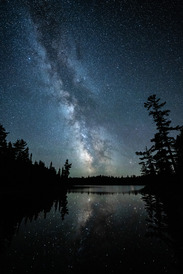
Wicaŋhpi Heciya Taŋhaŋ Uŋhipi
(We Come from the Stars)
Stellar nucleosynthesis.
That explains
where everything
in our universe
came from according to astrophysicists who
only recently discovered the cosmological constant causing the expansion
of our universe.
Our creation story tells us we came from the stars to this place Bdote
where the Minnesota and Mississippi rivers converge,
our journey along the Wanaġi Caŋku,
in our universe,
that stargazers later called the Milky Way now disappearing
in the excessive glow of a million million urban uplights.
The original inhabitants of this place,
of our universe,
we are Wicaŋhpi Oyate, People
and will remain here as long as
we can see ourselves
in the stars.
Dr. Gwen Westerman, first Indigenous poet laureate of Minnesota
|

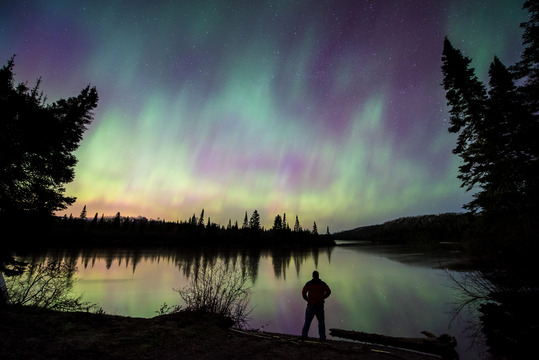 PHOTOS: Travis Novitsky
If you cannot yet count yourself among the lucky ones who have witnessed the captivating northern lights display, that might change soon.
2025 is predicted to be the peak year (or solar maximum) for the shift in the sun's magnetic fields, a cycle that happens approximately every 11 years. As we approach solar maximum, there's increased interaction of solar wind particles with the earth's magnetic field, accelerating the particles towards Earth's poles. What we see in the sky is the result of particles colliding with atoms and molecules, causing electrons to get to higher energy levels and release light. The atmosphere's oxygen adds the green or red hues of the aurora, and nitrogen the blues.
While the frequent occurrence is a plus for catching the night sky show, you can do your part by being at the right place at the right time.
For the "right time," you'll need to check two forecasts: Look for clear skies and new or young moon at your viewing location, and geomagnetic storms in the sun. Prime season is between September and March.
As for the "right place"... we have Minnesota public lands! Thanks to responsible lighting systems and their remote location, many of our state parks and forests offer night sky watching opportunities — plus, campsites and cabins to spend the night.
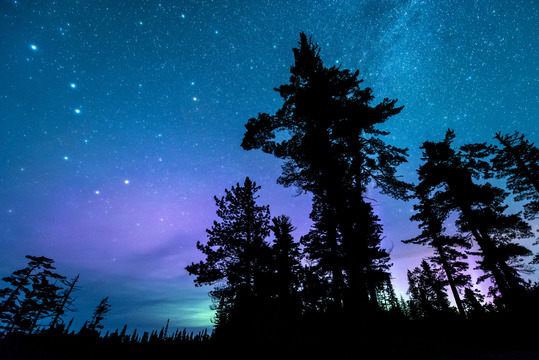 Ojiig (fisher) is the Ojibwe name for the asterism many of us we know as Big Dipper, part of the constellation Ursa Major (Big Bear) from the Greek mythology. Travis Novitsky managed to capture ojiig and faint waawaate at the same time! Click on the photo to watch a video about the ojiig legend.
Aurora, wanáǧi thawáčhipi, waawaate
We commonly refer to northern lights as "Aurora," the name for the Roman goddess of dawn. Fun fact: Depending on what hemisphere you're on, you'll be looking at northern lights or aurora borealis, or southern lights or aurora australis.
Waawaate is the Anishinaabe name.
There are three Dakota names for the northern lights, depending on how you want to talk about them:
- wanáǧi thawáčhipi, the dance of the spirits;
- haŋwákhaŋ, sacred mystery of darkness (Haŋ is the spirit of darkness);
- maȟpíya thaŋíŋ: the sky/heavens/clouds showing themselves.
Watch Northern Night, Starry Skies, an hour-long Minnesota-made documentary that explores how the night sky has been interpreted across cultures and through time with a special focus on Dakota and Ojibwe traditional star knowledge.

When the northern lights aren't putting on a show, look at the stars and the moon.
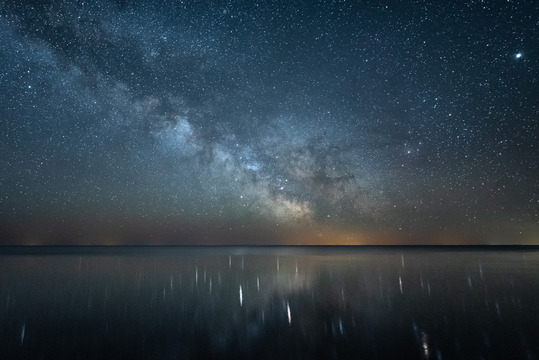 The Anishinaabe know the Milky Way as Jiibay Ziibi (River of Souls) or Jiibaykona (Spirit Path) and the Dakota call it Wanaġi Tac̣aƞku (Road of the Spirits/Ghost Trail).
Don't waste your "once in a super blue moon" chance! Take note to look for this rare occurrence on August 30/31, or wait till January 31, 2037. The moon will appear brighter as it'll be closest to Earth. It so happens that it's the second full moon of the month, making it a "blue" moon.
For stargazing, plan on going out on a dark night, without moonlight. Once you're in a dark spot, keep it dark. It might feel unsettling at first, but don't turn lights on. Stay in a safe place and, after about 20 minutes, your eyes will adjust to the dark.
To identify constellations, you can get a printed star chart (or planisphere) or download it. There are phone apps that tell you what constellations you're looking at by pointing the camera at the sky.
While you're most likely to hear the Greek and Roman constellation names and stories, there are multiple other stories for different cultures around the world.
The University of Minnesota's Bell Museum has downloadable guides with information about moon phases, astronomy highlights, a custom star map and stargazing tips.
Learn about Anishinaabe and Dakota sky objects: Deep Sky Objects Through an Indigenous Lens; NativeSkywatchers.com has multiple resources, including Indigenous star maps.


Spend a night out in nature to look at the sky, and you'll also discover a whole other world coming to life.
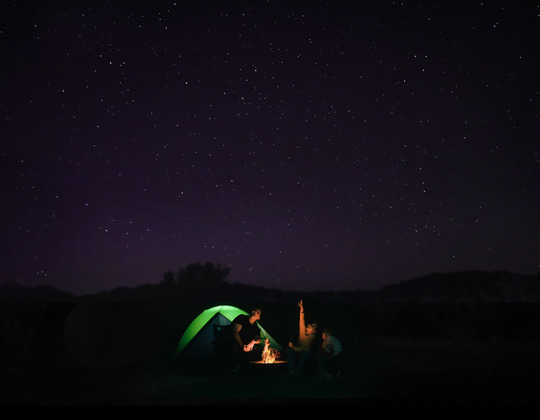 Listen for the primeval calls of owls, coyotes and wolves. Look for fireflies flashing their mating signals in wetland meadows and forest edges near water.
You might notice nighthawks as they dive from above the treetops. They're active at dawn and dusk as they forage for aerial insects. If you can't see them, keep an ear out for their low, buzzy "peent" call.
We can't talk about nocturnal creatures without talking about the only mammal capable of true flight, the bat. Bats dodge obstacles and find insects by using echolocation, emitting supersonic cries and picking up echoes as they bounce off of objects. Echolocation was the principle that led to the development of sonar and radar!

Feeling stagnant in her life and work, Annika Samuelsson decided to take on a challenge, to complete the 68 Hiking Club trails in just six months (and eight days) with her camper van.
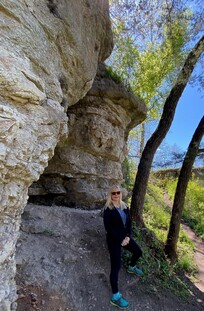
Annika’s love for the outdoors started at an early age, in rural Sweden. “With limited indoor activities, I had no choice but to be active.” She walked to school, hiked in the woods with friends, and went camping, skiing and sledding.
But Annika never used parks growing up. “Sweden has some designated parks but we mostly use private land. ‘Allemansrätten,’ which translates to ‘every man’s right’ or ‘right of public access,’ means you can roam on anyone’s land, enjoying nature, as long as you don’t disturb or destroy anything.”
When she moved to the U.S. Annika discovered parks and a new way to recreate outdoors. Of the different states she’s lived in, Minnesota has been a favorite for its natural spaces.
|
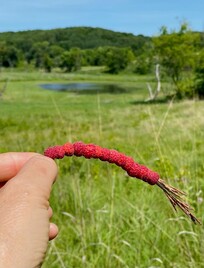
In 2021, Annika decided to complete the Hiking Club, one last adventure with her camper van before selling it. She discovered new-to-her parts of Minnesota and had many new adventures. “Who knew I could walk to North Dakota from Red River State Recreation Area, or look at Canada from Grand Portage State Park?” Zippel Bay State Park, with its beautiful beach, “it does not even feel like you’re in the Midwest,” and all the wild berries was one of the highlights. “In Sweden, when I was a kid, we would thread berries on straws and bring them home that way. I still like doing that.” (Pictured.)
What’s next? Collecting state park stamps in North Carolina, visiting all U.S. National Parks, and hiking the entire Superior Hiking Trail—"but in sections, not all at once.” Wherever her personal projects take her next, Annika’s sure to remember the influence her home country and Minnesota had on her outdoor journey.
|
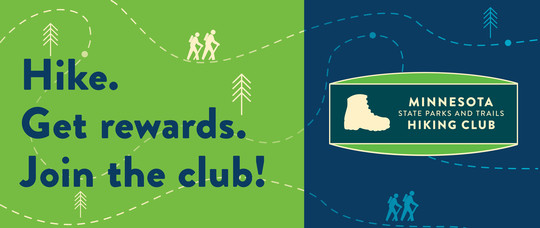

Much gratitude to renowned night sky photographer Travis Novitsky for sharing all night sky photos brightening this issue.
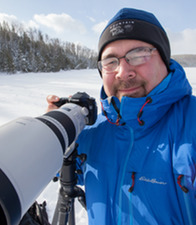
Through photography, I connect with nature on a deeper level. It helps me slow down and truly appreciate my surroundings. From behind the lens, I focus on being present in the moment and my mind stops racing, and I feel more centered and at peace.
The night sky is my favorite subject. I like trying different techniques to capture the Milky Way, aurora borealis (northern lights) or a landscape illuminated by a full moon. With reduced vision, we have to rely more on other senses at night, which enhances our connection to nature.
|
|